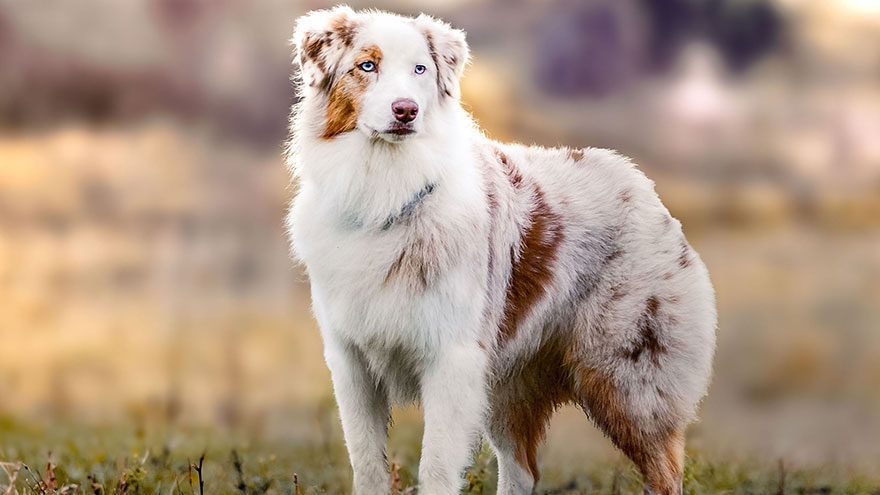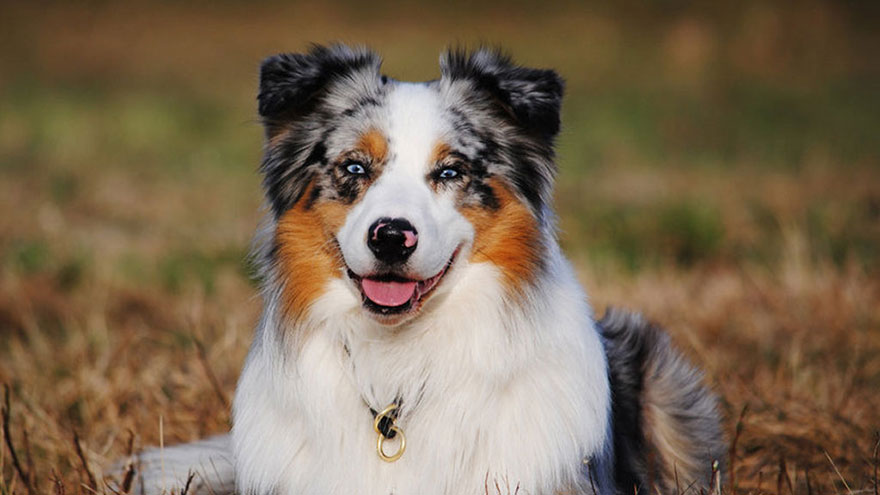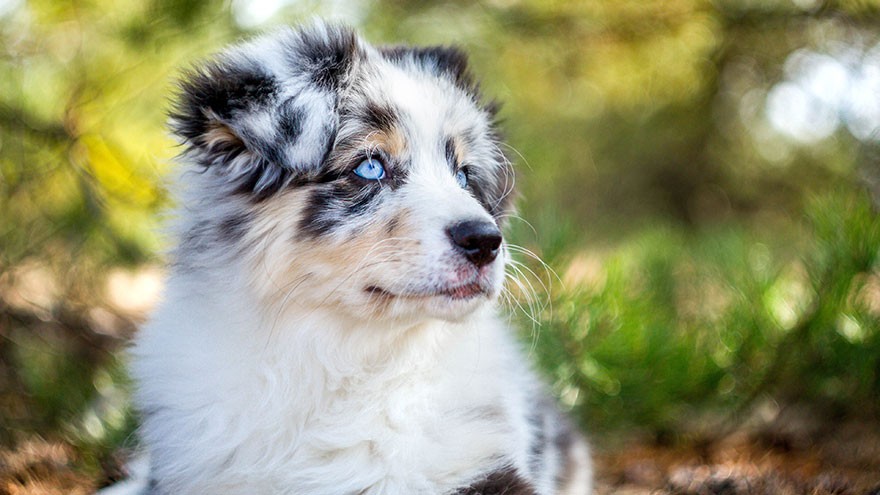Australian Shepherd Breed Information
The Australian Shepherd came from an area between France and Spain known as the Pyrenees Mountains. During times of migration in the 19th century, settlers would travel with herding dogs, which originated as different breeds such as the Dorset Blue Shag and Cumberland Sheepdog. These and other breeds were a huge benefit to the shepherds in keeping flocks of sheep together. Temperatures in these mountains were frigid so as the settlers made their way into western states, they were faced with completely different climates, which began to change the shape of the Australian Shepherd into the breed we know today.
By the era of the California Gold Rush, the numbers of sheep and herding dogs was massive. To handle the abundance of herding, dogs from Australia were chosen due to their ability to handle the California climate. With intense training, the Australian Shepherd was magical in its ability to keep sheep calm and in control regardless of the weather or terrain. Interestingly, the Australian Shepherd was not considered a dog breed but a type of herding dog until the mid-1950s. At that time, this breed was used for performing stunts, not herding sheep.
However, by 1957, the Australian Shepherd Club of America was founded, making this dog an official breed. Today, people still use the Australian Shepherd as a working dog on farms and ranches but they are a great family pet as well. Sometimes, this dog is referred to as an “Aussie”, which has bloodline ties to Australia, although it actually originated from the United States. With incredible drive, energy, and devotion, it is common to see this dog on the dog sports field as well due to its amazing agility.
Australian Shepherd Temperament

The fascinating aspect of the Australian Shepherd is that being a split breed, you will see two distinct personalities emerge, which vary depending on the dog’s specific bloodline. Regardless, the Australian Shepherd is again, extremely agile, mentally sharp, and goes into overdrive when it comes to work. Typically, this breed is very affectionate and usually gets along great with children but keep in mind, the Australian Shepherd focuses intently on work, meaning it may not have as strong as a drive to settle in as a family pet than some other breeds would.
One of the challenges of keeping an Australian Shepherd only as a family pet is its instinct to nip or chase after children running. However, if the dog is socialized and trained young, this behavior can usually be brought under control. The Australian Shepherd is also very protective of master, family, and home, which can seem a little menacing to some. The funny aspect of this breed’s personality is its smile. When the Aussie is excited to see family, it will show its teeth as if smiling and make a sneeze-like sound. Then without a tail to wag, the dog will wag the entire backend when happy.
Australian Shepherd Size and Color

For size, most people look for an Australian Shepherd that will measure between 20 and 23 inches from the withers for a male and between 18 and 21 inches for females. As far as weight, the male will generally range anywhere from 50 to 65 pounds while the females are slightly smaller, 35 to 50 pounds. You will also find that as far as appearance, the male Aussie is typically showier, meaning they have longer hair, a heavier bone structure, and a broader, more masculine head with some kind of regal air. However, the female and male of this breed are beautiful, usually with medium texture hair that can be straight or wavy.
This double-coated breed allows it to tolerate a number of different climates, another reason for its popularity. Additionally, the Australian Shepherd comes in beautiful color and color combinations, which include black, blue merle, red merle, and red with white and/or tan markings. Not all Australian Shepherds have white around the neck but if they do, it is perfectly acceptable. Other parts of the body where white is accepted by American Kennel Club standards include the legs, chest, under parts, muzzle, and head. The only disqualifications according to the American Kennel Club are white body splashes, which would include white between the tail and withers, as well as the back and elbows.
One of the most distinct characteristics of this breed is eye color, which can be amber, brown, green, hazel, or blue, as well as two different colored eyes and bi-colored. Because of the eyes, the Australian Shepherd was given the nickname “ghost eye dog”. The other distinguishing feature of this breed is the docked tail, which makes it appear as if there is no tail at all. Keep in mind that some dogs are born naturally with short tails but most are long.
Australian Shepherd Feeding and Grooming Requirements

One of the most important things to consider when buying a dog is that each breed has slightly different nutritional needs, which is what contributes to the coloring, coat, size, and even temperament. To keep the Australian Shepherd healthy and happy, we recommend you look for food that offers the same or similar nutrients to that of its native environment, which will help with assimilation and digestion. This means the right balance of fatty acids, protein, carbohydrates, minerals, and vitamins. With so many options on the market, you should talk to your breeder or veterinarian for specific brands.
The Australian Shepherd has long hair but interestingly, weekly brushing is about all that is needed. As far as baths, this breed stays relatively clean so this would be required only as needed. Keep in mind that the Australian Shepherd does shed. Therefore, if you do not want to mess with hair, this might not be the breed for you. Just remember that taking the dog to have the hair thinned every four months or so will help tremendously.
Australian Shepherd Exercise Needs

Without doubt, the Australian is a smart, playful, and devoted dog but because they have a built-in drive to work, it is imperative they be exercised daily. Otherwise, you would likely end up with a bored dog that could become hyperactive or sometimes, destructive. Overall, the Australian Shepherd is an excellent choice for people with land or those who want an active breed dog. One last note, the male Australian Shepherd is not your typically male dog in that he is very gentle and non-aggressive so when choosing, both male and female make great choices.
Read More About
- Australian Shepherd : 10 Most Common Questions
- Australian Shepherd Training Guide
- Owning an Australian Shepherd : Breeder Recommendations
- Australian Shepherd Health Guide
Check out the video version of this article on YouTube

